Time 9:31 a.m. Non-fatal injuries 70+ Number of deaths 8 | Cause Gas leak Date 12 March 2014 | |
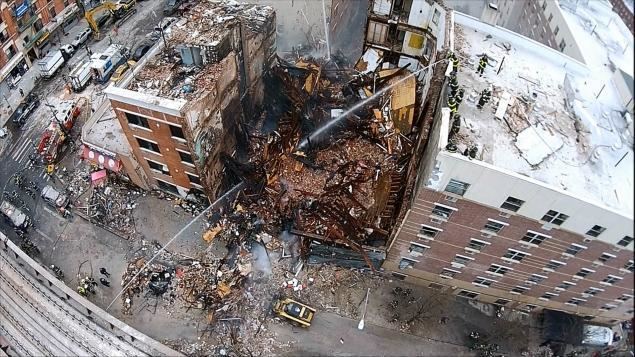 | ||
Property damage Collapse of buildings located at 1644 and 1646 Park Avenue Location Harlem, New York City, New York, United States Locations East Harlem, Park Avenue, 116th Street | ||
The 2014 East Harlem gas explosion occurred at 9:31 a.m. on March 12, 2014, in the East Harlem neighborhood of Manhattan in New York City. The explosion leveled two apartment buildings located just north of 116th Street, at 1644 and 1646 Park Avenue, killing eight people, injuring at least 70 others, and displacing 100 families.
Contents
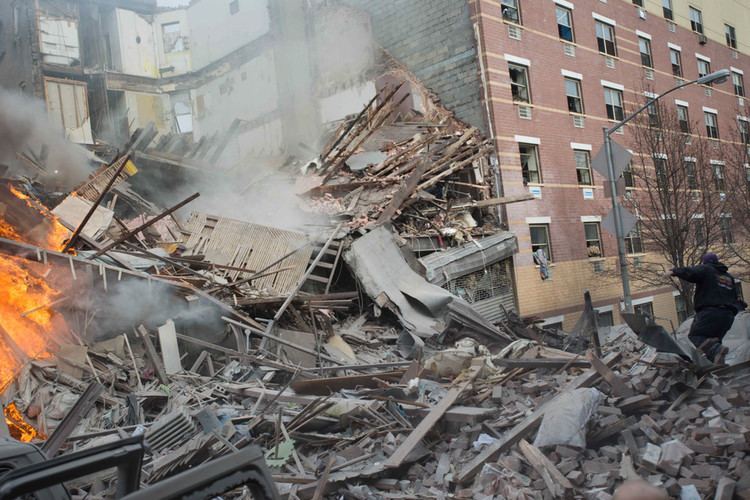
City officials initially pointed to a gas leak as the cause of the blast. In June 2015, the National Transportation Safety Board, which is responsible for investigating gas-related incidents, blamed failures on the part of both Con Ed, the gas company, and New York City for the explosion.
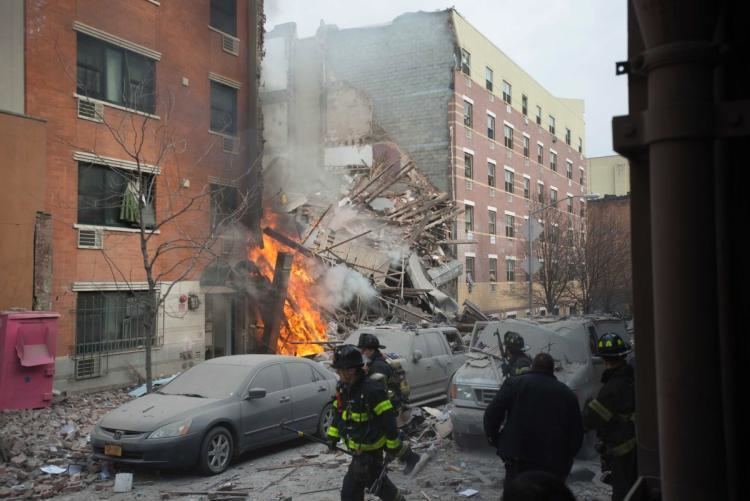
Site
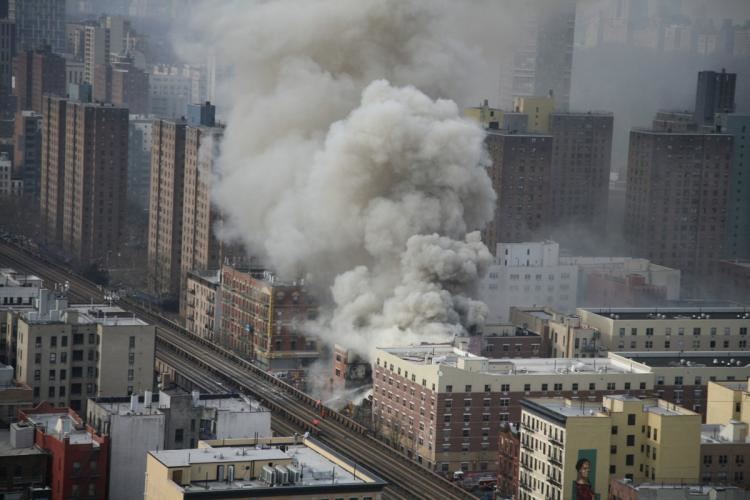
The two collapsed buildings were five stories tall and stood at approximately 55 feet (17 m). Together, the two buildings contained 15 residential apartment units. 1644 Park Avenue had the "Spanish Christian Church" on the ground floor while 1646 Park Avenue had a piano store occupying that space.
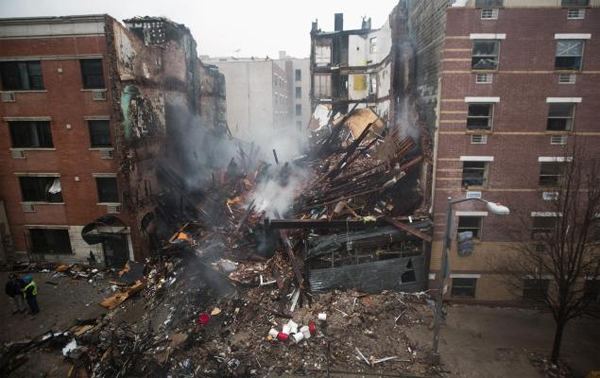
Utility company Con Edison said it received a gas leak call 15 minutes prior to the explosion and had sent its two crews to the spot; however, they arrived after the explosion.

The United States National Transportation Safety Board (NTSB) – which has responsibility at the Federal government level for investigating accidents involving pipelines and the transportation of hazardous materials – said that natural gas was found in nearby soil in varying concentration. NTSB Board member Robert Sumwalt also revealed that the gas main buried under Park Avenue near the scene at 116th Street dated back 127 years to 1887.
Effects
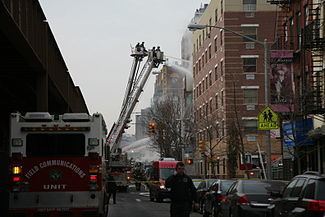
Bricks, wood, and other debris landed on the adjacent elevated Metro-North Railroad tracks, suspending service to and from Manhattan for most of the day while crews cleaned up the mess. Service was restored by the evening rush.
In on-the-fly television interviews, witnesses described feeling the force of the blast from blocks away, including entire buildings shaking as though it were an earthquake, and it furthermore blew out windows in adjacent properties.
Morning television shows on the major city networks were preempted in favor of nonstop news coverage of the explosion and its aftermath.
Response
The New York City Fire Department and the New York City Police Department responded to the scene after the explosion within two minutes.
Two fire companies, quartered in an FDNY firehouse located approximately five blocks to the south, reported hearing and feeling the effects of the massive explosion and alerted the department's dispatch office. Within a short amount of time, the incident escalated to a five-alarm fire, bringing over 250 firefighters to the scene.
Reaction
Congressman Charles Rangel, who represents East Harlem and other parts of New York City, said, "I've never had anything this horrific that's happened in my community since I've been in Washington... This is a very serious thing. It’s our community's 9/11, even though we don't know how it started."
The American Red Cross in Greater New York was on the scene and helping those displaced, but otherwise not requiring emergency medical services, using nearby Public School 57 as a makeshift center before MTA buses transported them to a Salvation Army shelter at 125th Street. The National Transportation Safety Board (NTSB) was investigating the scene.
New York City Mayor Bill de Blasio expressed grief and said that there would be a search through the rubble of the building once the fire is put out.
Victims
The fatalities in the explosion and collapse included eight people. Two bodies were pulled from the wreckage that were not immediately identified:
Cause
On June 9, 2015 the National Transportation Safety Board (NTSB), which is responsible for investigating gas-related incidents, reported that faulty welding of two Con Edison gas pipes was primarily responsible for the explosion, but that it might not have happened at all if New York City had repaired a large hole in a nearby sewer main which it had known about for 8 years. The hole in the sewer undermined the soil beneath the gas pipes, causing them to sag and then crack open. Thus it was the combination of the two circumstances which caused the disaster. The NTSB also faulted local residents who did not report the odor of leaking gas, which began at least a day before the explosion, and Con Edison's failure to notify the New York City Fire Department immediately once the leak had been reported to the company.
In the aftermath, Con Edison sued New York City, and the office of New York City Mayor Bill de Blasio rejected the NTSB's finding of fault on the city's part, saying that the effects of sewer leakage was "localized" and did not cause the gas pipes to break.
